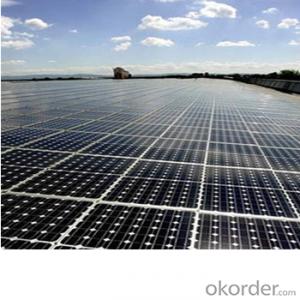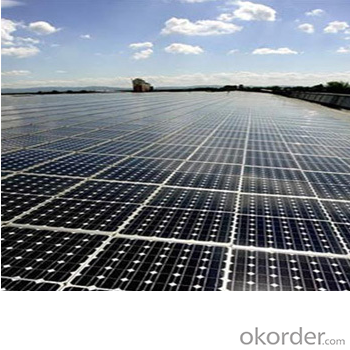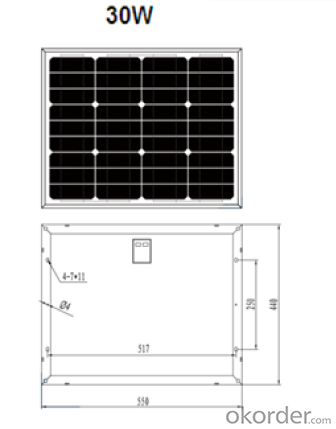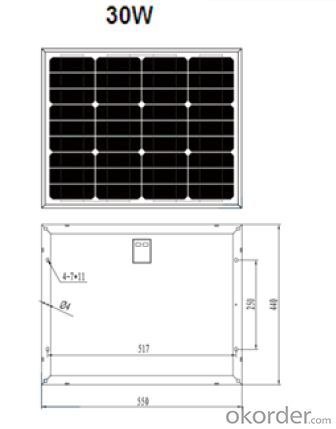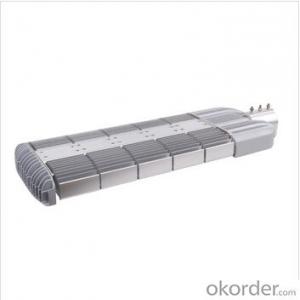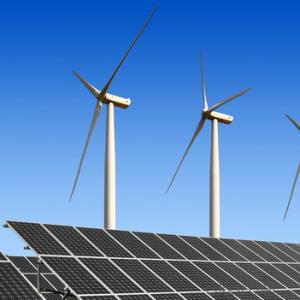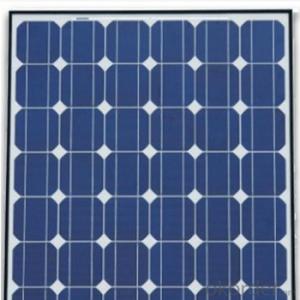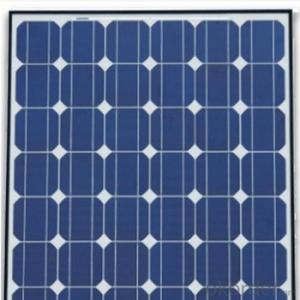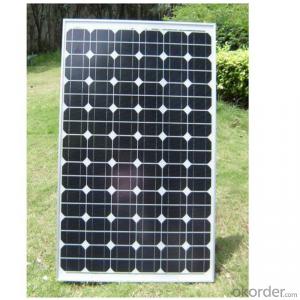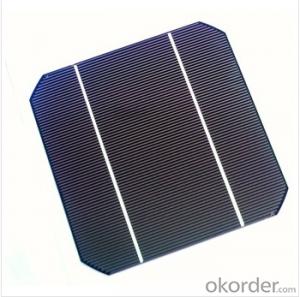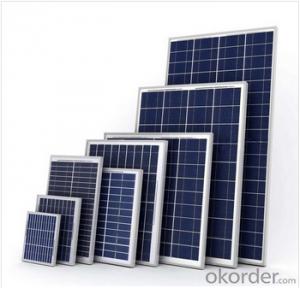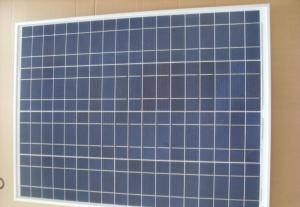Solar Panels Iowa City - High Efficiency Poly/Mono Solar Module Ice-20
- Loading Port:
- China main port
- Payment Terms:
- TT OR LC
- Min Order Qty:
- 200 watt
- Supply Capability:
- 500000 watt/month
OKorder Service Pledge
OKorder Financial Service
You Might Also Like
Instruction
Format : 156 mm × 156 mm ± 0.5 mm
Thickness: 210 μm ±40 μm
Front (-) : 1.5mm bus bars (silver),blue anti-reflection coating (silicon nitride)
Back (+) : 2.5mm wide soldering pads (silver) back surface field (aluminium)
Feature
1. High efficiency and High power.
2. Long-term electrical stability.
3. Lowest price and Fastest delivery.
4. Good quality and best service.
5. Bulk supply
6. Trusted Warranty
7. Big Sale
8. More than 25 years on the lifetime.
Images
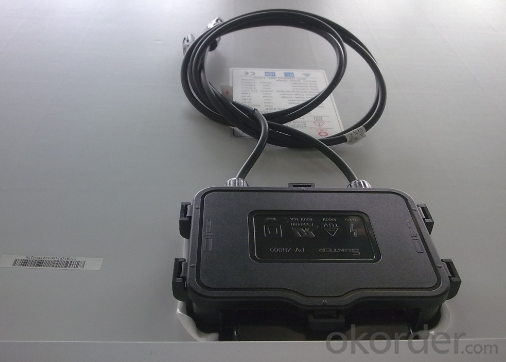
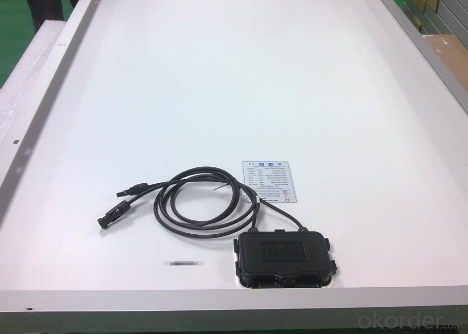
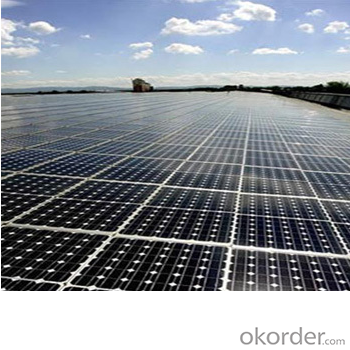
Specification
Electrical Characteristic of Mono Solar Cells
Efficiency (%) | Pmpp (W) | Umpp (V) | Impp (A) | Uoc (V) | Isc (A) | FF (%) |
18.35 | 4.384 | 0.526 | 8.333 | 0.63 | 8.877 | 78.39% |
18.20 | 4.349 | 0.526 | 8.263 | 0.63 | 8.789 | 78.54% |
18.05 | 4.313 | 0.525 | 8.216 | 0.63 | 8.741 | 78.32% |
17.90 | 4.277 | 0.524 | 8.161 | 0.629 | 8.713 | 78.04% |
17.75 | 4.241 | 0.523 | 8.116 | 0.629 | 8.678 | 77.70% |
17.60 | 4.206 | 0.521 | 8.073 | 0.628 | 8.657 | 77.36% |
17.45 | 4.170 | 0.519 | 8.039 | 0.628 | 8.633 | 76.92% |
17.30 | 4.134 | 0.517 | 8.004 | 0.626 | 8.622 | 76.59% |
17.15 | 4.098 | 0.516 | 7.938 | 0.625 | 8.537 | 76.80% |
17.00 | 4.062 | 0.512 | 7.933 | 0.625 | 8.531 | 76.18% |
16.75 | 4.002 | 0.511 | 7.828 | 0.625 | 8.499 | 75.34% |
16.50 | 3.943 | 0.510 | 7.731 | 0.625 | 8.484 | 74.36% |
FAQ
We have organized several common questions for our clients,may help you sincerely:
1. What’s price per watt?
A: It’s depends on the quantity, delivery date and payment terms of the order. We can talk further about the detail price issue. Our products is high quality with lower price level.
2. Can you tell me the parameter of your solar cells?
We have different series of cells with different power output, both from c-si to a-si. Please take our specification sheet for your reference.
3. How do you pack your products?
We have rich experience on how to pack the panels to make sure the safety on shipment when it arrives at the destination.
- Q: Can solar panels be installed on windows?
- Yes, solar panels can be installed on windows. There are specialized solar window films and transparent solar panels available that can be affixed to windows, allowing them to generate electricity from sunlight while still maintaining visibility. These innovative technologies enable solar energy harvesting even in urban environments with limited roof space.
- Q: So lets say that Everyday I use ,280 kWh. How many 250 watt solar panels would I buy so that I don't need to buy electricity anymore. Sorry if this sounds stupid, I am doing research on why american homes should become more cost efficient.
- Everyday I use ,280 kWh 280 kW-hour / 24 hours = 470 kW WOW, that is a very high power level, most homes use an average of .2 kW. My guess is that you mean you use 280 kW-hour in a year, which comes to an average power of .3 kW, typical. Assuming you get, worse case, 6 hours of sun per day, for the first case, 470 kW, each solar panel generates the equivalent of 250 x6/24 = 60 watts, so you would need 470k/60 = 8000 panels For the second case, .3 kw or 300 watts, divided by 60 that is about 20 panels. Depending on where you live, you could need as much as twice that number. Plus you need charge controller, lots of expensive batteries, and an inverter. The big problem is periods of no sun. If you demand continuous power, and you have a period of, say, 24 hours with no sun because of storms, etc, then the number of batteries increases to the hundreds.
- Q: Can solar panels be installed on a sloped roof?
- Yes, solar panels can be installed on a sloped roof. In fact, sloped roofs are a common choice for solar panel installations as they offer an optimal angle for capturing sunlight. However, it is important to consider the pitch and orientation of the roof to ensure maximum efficiency and proper installation.
- Q: How do solar panels affect the property's energy independence?
- Solar panels can greatly enhance a property's energy independence by harnessing the sun's energy to generate electricity. By producing renewable energy on-site, solar panels reduce dependence on the traditional power grid and decrease reliance on fossil fuels. This allows property owners to generate their own clean, sustainable energy, leading to reduced electricity bills and a more environmentally friendly lifestyle.
- Q: Around this time here in Georgia we will begin to get some big storms with high winds. I have a solar panel on a mount that isn't all that sturdy and could be knocked over with any winds pretty much above 5mph. I can't put anything in the ground to do this. I used to have it mounted to the roof of a playground for the most sunlight, but because of the angle of the sun and the tree leaves, I have to have it on a quot;portablemount so I can move it throughout the day, and I can tell you one thing is certain, and that's that it isn't the most sturdy thing ever. I'll have it a little better next weekend but it'll still be able to easily blow in the wind. Should I just hang the panel along the wall during a storm then reconnect it to its base once it's over?I'm pretty good with wood, so any wood creations to help out with the thing would greatly help. Just please keep it on a low budget.
- Solar panels are a costly and significant investment. Therefore, protecting them from harm should be a top priority. Unfortunately, moisture and water are common ways for solar panels to become damaged or broken. Safekeeping solar panels from both of these threats is a simple, inexpensive procedure, and doing so might save the solar panel owner a bundle if carried out correctly Instructions : Set a thick strip of silicone between each cell when putting the solar panel together, in order to prevent moisture seepage. 2: Use Plexiglas instead of glass as the face of your solar panel. Plexiglas is less liable to break and therefore safe from hailstorms or accidents. 3: Glue adhesive silicone to each side of your solar panel(s), adding additional sealant and protection from water to your commodity. :)
- Q: I bought a pack of OEM mini solar panels that produce 4.2v and 22mA and I was just wondering how many LED's I could hook up to one mini solar panel? I currently have one green LED with a resistor on the one panel but was wondering how many I could possibly run off of one panel?
- You need to answer that by designing circuits to provide each LED with its specific voltage and current requirements, and then see how many you can supply.
- Q: My solar panel is 24long..It is set at 45deg..the arms are 8quot;long to achieve that angle for winter. I need to get to 7deg for summer..how long will the new arms need to be?..in layman's terms please...thx
- You did not give the details of how the legs are attached to the panel. I did some calculations on my right triangle analysis application. Based on an assumption that the legs are vertical and attached to the bottom of the panel top, i calculated the legs must be 6.97 inches long. This compares favorably with the 8 inches you quoted. t If my assumption is true, the leg length for a 7 degree angle is 2.925 inches. The configuration, if my assumption is correct, will be a right triangle. The hypotenuse (longest leg of the triangle) is the panel length and the vertical legs are the supports. If my assumption is incorrect, edit your question to detail the support /panel configuration. TexMav
- Q: Can solar panels be used for powering a wastewater treatment plant?
- Yes, solar panels can be used to power a wastewater treatment plant. Solar energy is a sustainable and renewable source of power that can be harnessed to generate electricity for various applications, including wastewater treatment. By installing solar panels, the plant can reduce its reliance on conventional electricity sources and lower its carbon footprint. However, the feasibility of using solar panels for powering a wastewater treatment plant may depend on factors such as the plant's energy requirements, available space for solar panel installation, and local climate conditions.
- Q: Due to erratic power cuts in my area I want to make up by using a 30watt solar panel. My decoder is 30watt but my TV is 70W. I need something small. I don't have problem with sound. Just picture.
- Do what we do when power is cut (although we have very reliable power - we loose as much as 2 hours a year), is go Amish. That is go without powered technology. Now, for you, you need more than a solar panel (and likely more than 30W, but that is a start) - you need a battery or set of batteries to store the collected power. 20Ah might do. You need an inverter to power things. For that, likely a 300W will do. For a TV, go shopping, and look at the labels on the back of the TVs. I just bought a 24 TV rated at 40W. If you get a 9 LED TV, it may be likely you can run that directly from battery, for many have separate DC brick supplies. With those, you can make a cable to power it directly from a 2V or so battery, if the supply can make 2 to 5V. Depending on your provider, you may be able to get a mini-decoder which uses a separate brick or wall supply, which means the decoder likely can be directly battery powered. Such a decoder may draw less than 20W.
- Q: What is the most affordable, yet highest watt solar panels available?
- in case you raise a dumb-bell a undeniable style of feet, you have expended a undeniable volume of potential, does this variation if the gymnasium exchange into on yet another floor of the construction? Grounding is needed for defense and to dodge floor loops from happening, the quantity of potential produced would not exchange and any adjustments in potential will bring about a risky floor loop attempting to equalize it.
Send your message to us
Solar Panels Iowa City - High Efficiency Poly/Mono Solar Module Ice-20
- Loading Port:
- China main port
- Payment Terms:
- TT OR LC
- Min Order Qty:
- 200 watt
- Supply Capability:
- 500000 watt/month
OKorder Service Pledge
OKorder Financial Service
Similar products
Hot products
Hot Searches
Related keywords
